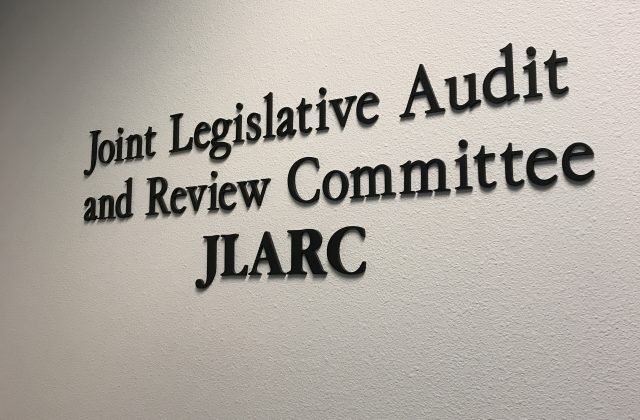First Read of JLARC Study: More Smaller Units Could Lower Per Unit Costs
The Joint Legislative Audit and Review Committee (JLARC) has released their study of housing costs that we supported in the State Budget in 2017. It was supposed to compare non-profit housing costs with market rate housing costs. It didn’t do that. In spite of our offer to help JLARC get market rate data, they said that it couldn’t be found. Instead, JLARC used estimators to look at projected and actual costs of six projects. They also looked at other comparative costs year over year and the costs regionally between different projects with Low Income Housing Tax Credits (LIHTC). It’s not the study we wanted but there is still some useful information and recommendations. But they did point to some important differentials worth looking at like unit count.
First of all, while the first headline, “Development costs for six projects are consistent with independent estimates” might seem to undermine our continuing claim that non-profit housing costs more to build, but it doesn’t. What JLARC did is hire “professional cost estimators to calculate a retrospective cost estimate for each housing development.”
But this doesn’t tell us much. It’s kind of like saying, “I’m going to buy an Aston Martin and I expect to pay $299,000.” If I paid $307,000 I guess one could argue I was “within range” of what I expected to pay. This is not particularly useful information when trying to figure out if non-profit housing is normatively too expensive. What we wanted was a comparison of why, apparently, a for-profit project costs a lot less than a non-profit project. For example, why does the Plymouth Housing project at 501 Rainier cost $369,000 per unit while a comparable project down the street cost roughly half of that?
Nobody has suggested anywhere, certainly not me, that there is outright fraud or malfeasance in any of the programs or big overruns. The argument has always been about efficiency, the cost per unit and therefore the rate of production. Why is non-profit housing so expensive and therefore so scarce? Getting an estimate about what an inefficient system will produce and then concluding that it produced it as inefficiently as expected isn’t great research. It does sort of check off the list the question of whether costs are simply overruns or poor construction management; that is useful.
But is non-profit housing development inefficient compared to market rate, for-profit housing? Like most reports looking at this, JLARC doesn’t really draw that conclusion, but it is inescapable that they find that such housing is 15 to 18 percent more expensive than market rate housing and that non-profit is more expensive to build in Seattle in King County. They also conclude that the number of units is an indicator as well. This last point is one that I am coming to believe is a key to understanding why as JLARC says, “all things being equal,” the per bedroom cost for non-profit housing is higher than market rate housing.
This comparison in Exhibit 3.2 of for-profit and non-profit is between producers of LIHTC tax credit programs. That is a useful comparison and shows that even when using a subsidy, usually 4 percent tax credits, for-profit developers are more efficient.
As I mentioned above, the other thing the report uncovers is the importance of unit size. I wrote about unit size today at Forbes; there is a lot of incentive for producers and consumers of housing to make smaller units with lower rents in dense and popular areas. The reason is that as unit size goes down, so can rents. It’s the same thing as having 12 people divide up a dinner check for the same amount of food instead of 5. Developers have an incentive to squeeze more units on a site near transit, for example, because they can offer lower rents. Renters have been willing to sacrifice dozens, even hundreds of square feet for lower rent. It works.
However, non-profits don’t have this incentive. When I did my one non-profit project of 43 units, we struggled to make ends meet in the project. We did what we could do to save on materials and labor and anything else. There simply wasn’t much savings to be found. Had I thought at the time to reduce the overall size of the units, even the two-bedroom units, our project would have housed more people and been more financially feasible. And JLARC comes to same finding: costs per unit go down as unit count goes up.
I have a lot of respect for the work that the JLARC people do, but this study mostly misses the mark. It doesn’t directly answer the question about whether the market is more efficient than the subsidized system, nor does it conclude that it’s all about the same in the end. But it does find that indeed, that financing for non-profit housing is “more complicated”(page18). And it also points to location as a driver, something pretty obvious but important to document.
Finally, the JLARC report also, indirectly, acknowledges the private sector is more efficient by recommending that market rate developers do more LIHTC projects. Why? Because the market rate builders building LIHTC projects build them more efficiently.
In the end, the three recommendations — expand the LIHTC program for market rate developers, require the Commerce Department to do more diligence on final costs, and requiring them to report annually — are all solid recommendations. I’ve urged them to consider a fourth recommendation about unit size. And unit size might be the answer why the per unit costs for non-profit projects in Seattle are skyrocketing. If non-profit unit sizes have stayed the same over time, while for-profit units have gotten smaller, that could be the (or an) answer. There is still a lot more work to do, and we’ll share results of an analysis we’ve done later this month.
Keep Seattle For Growth in the debate in 2019. Make a contribution online today. Click on the big DONATE button.





